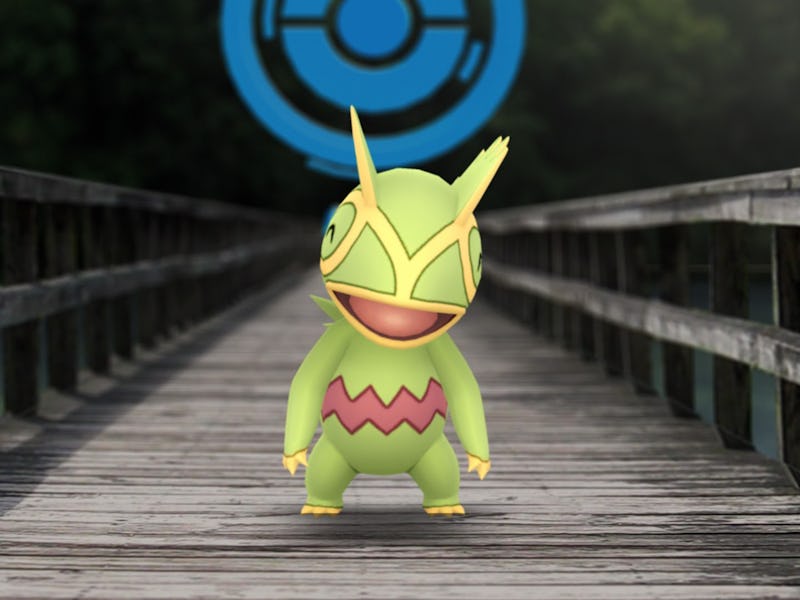One Elusive Chameleon Is the Herald of a New Pokemon Go Generation
Karma Chameleon

Tens of thousands of Pokémon Go fans with electric charger cords dangling from their Pikachu backpacks flocked to Las Vegas on February 17 and 18 to participate in the Hoenn Tour, the third event celebrating the success of Niantic’s mobile catch-a-thon. Players could participate in newly revealed Primal Raids, climb through the rubble to explore sectioned-off biomes, or purchase exclusive merch.
But one capture remained the most hyped and rare: a shiny Kecleon. The lizard had finally been released to the game after a half-decade wait and Vegas would be the only place you could catch a shiny version with a different-colored stomach stripe for the foreseeable future.
Kecleon is a small, unassuming chameleon who has never really stood out in the franchise — and not because it can turn itself invisible. In the mainline games, it has a unique ability that allows it to take on the typing of the last type of damage it took (which makes it an awful fighter and weak to almost everything). It showed up a couple of times in the anime and stole a rare mask in the Detective Pikachu game, but never reached mascot status. But in Pokémon Go, it’s been one of the most elusive and rare creatures in the game’s entire history.
The Shiny Kecleon I caught at Go Fest.
While almost all of its third-generation brethren were released in the game in 2017 and 2018, Kecleon remained absent. But as players grew upset that their Pokédexes remained incomplete, the lizard finally started to appear in the wild earlier in 2023.
“We really had a deadline set in stone of if we're going to do a Go Tour Hoenn, we need to make sure that we get Kecleon out by this time,” Michael Steranka, live game director of Pokémon Go tells Inverse at the Global Hoenn Tour.
In early January, players noticed invisible Kecleons climbing on PokéStop pictures. If you tap it enough times, it will fall off the sign and trigger an encounter that allows you to catch it. Steranko and his team wanted to “do right by that Pokémon” and utilize its “unique ability and characteristics.”
But the mechanic was also designed to push Pokémon Go’s new philosophy: Players need to go out in the world and explore to play. That was also a core pillar of the original pitch. Remember the days of 2016 when players stampeded through parks in the hopes of getting that elusive Snorlax? But given the state of the world in 2020, Niantic shifted the focus to more distanced play, giving players free items to access remote raids and having increased distance on PokéStops and Gyms.
But in the two years since, the focus has shifted back to bringing people outside. Remote raids now cost in-game currency that can be purchased for real money and those PokéStop ranges have been nerfed back to pre-2020 levels. The Kecleon encounter was created to try and push players into the streets and parks to experience something new from the game.
“We found a really interesting way to do it that encourages players to get outside,” Steranka says. “You'll never find a Kecleon at home. You have to go to PokéStops to discover them.”
As Pokémon Go matures, more of the game’s features will be linked to IRL exploration. Elite Raids introduced last year need upwards of 20 people to defeat in person. Steranka claims that the goal is to “foster in-game communities” that just can’t be done while sitting idly.
“It's been a really challenging two to three years within Pokémon Go,” Steranka said. “We had to make a lot of pivots at the start to make the game more accessible from home and whatnot. But as the world's opened back up, we want to get back to encouraging players to go and catch Pokémon outside.”